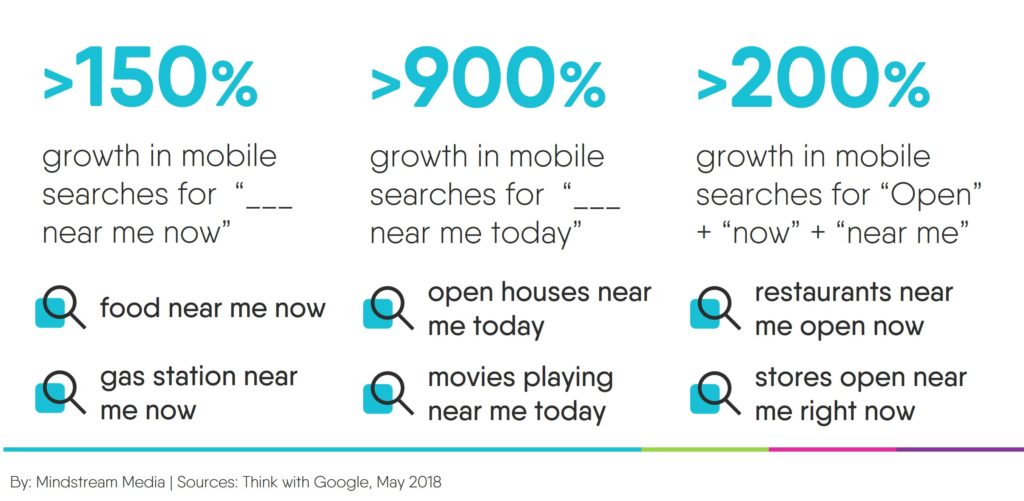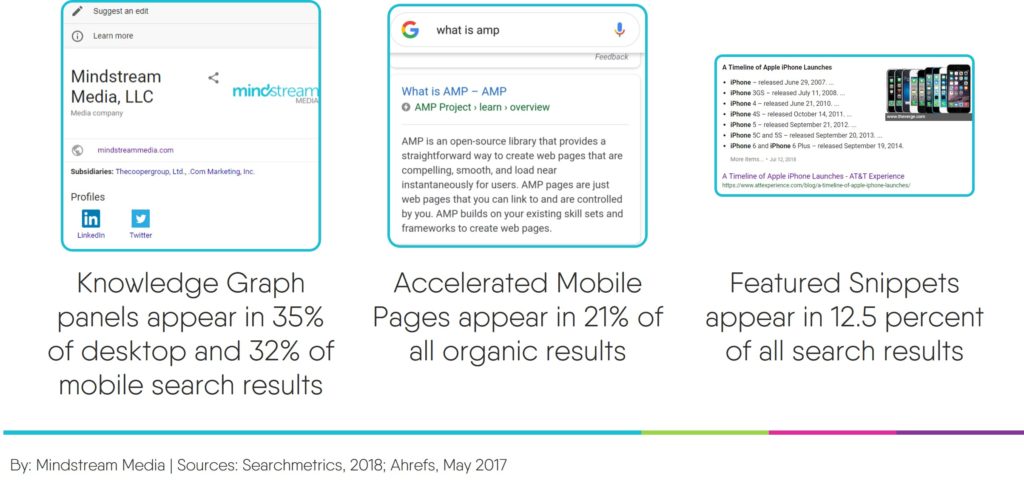10 Reasons Why Your Brand Needs a More Competitive SEO Strategy
Online search has become an essential part of our everyday lives. We use search to find driving directions to nearby locations, figure out the answers that are just beyond our reach (like remembering that one actor from that movie, you know, the one guy?) and research the products we want to buy.
For brands, that last task is significant. Consumers increasingly rely on search to find information about the products and services they want to buy. Which makes it more important than ever for brands to have a search engine optimization (SEO) strategy in place to make it easy for consumers to find the information they need.
Yesterday, in part one of this series, we covered what SEO is and how it works. In part two, we’re going to cover why it’s so important for your brand to implement and maintain a holistic SEO strategy. Here are 10 trends playing out in search today that prove just how important SEO is for brands looking to connect with online consumers.
No. 1: Consumers turn to search often
As a media channel, search commands a massive audience. Each month, Google processes more than 10.3 billion searches in the United States alone. And, while there are several major search engines, no one comes close to Google. The search engine powerhouse is responsible for more than 90 percent of web search traffic.

No. 2: Consumers rely on search when researching purchases
Consumers aren’t just turning to search to look up trivia and find the latest viral videos. Search is often used as a starting point when consumers begin to research upcoming purchases. This is especially true on mobile devices.

No. 3: Consumers use search to evaluate options
Consumers often use search engines to conduct exhaustive research and find the products that work best for them based on an endless number of factors. For brands, this makes it essential to implement SEO strategies to make information about your products easy to find for consumers.

No. 4: Searchers buy from the brands that provide the info they need
When consumers turn to search to research buying decisions, they usually know what products they want but aren’t as concerned with finding a specific brand that sells it. This makes it crucial for brands to stand out with easy-to-find information. 
No. 5: Consumers now expect to easily find information
Thanks to smartphones, consumers have 24/7 access to Google and are able to conduct exhaustive research on buying decisions at any time. This has given consumers more control over their buying journeys than ever before. Which means brands need to produce and optimize content that provides the information consumers expect.

No. 6: Consumers turn to search for immediate buying needs
Consumers don’t just use search for long-term buying journeys either. They often turn to search to make immediate purchases. And when consumers enter these types of searches, brands need to make their contact information, product descriptions and business hours easy to find.

No. 7: Consumers don’t like to scroll far in search results
Most people only focus on the results on the first page of Google. And, thanks to mobile and voice search, first-page real estate is shrinking. Implementing a holistic SEO strategy is essential to make sure your brand’s website can rise to the top of the search engine results pages.

No. 8: The way consumers search is changing
SEO used to focus on specific, short-tail keywords. This reflected the way consumers searched – they used short, choppy sentences to describe the things they were trying to find. Today’s consumers search in a much more conversational language, using natural terms as if they were talking to another person. If your brand is still using an outdated SEO strategy focused on short-tail keywords, it’s time for a change.

No. 9: The majority of website traffic comes from smartphones
This conversational search tone is in no small way due to the devices consumers use to conduct searches. Mobile and voice search are quickly taking over as consumers’ preferred search methods. So, while SEO strategies might have focused on desktop results for years, this strategy is no longer going to cut it. To succeed in today’s search landscape, your brand needs to update to a mobile-first SEO strategy.

No. 10: There’s a wider variety of search results to optimize for
Today’s SEO game isn’t just about ranking well in the standard organic results. Google has added several “Universal Search” results to their SERPs in recent years. Universal Search results include components like Featured Snippets, Knowledge Graph panels and Accelerated Mobile Pages (AMP). To drive the maximum amount of traffic to your brand’s website, your SEO strategy needs to include plans to optimize for these Universal Search integrations.

To learn how you can get started implementing an SEO strategy for your site, check out the third post in this series on how to conduct a high-level SEO audit.
Need help implementing the most up-to-date SEO best practices for your brand’s website? Contact Mindstream Media Group to learn about our holistic SEO approach.
More from Mindstream Media Group

Meet the Mindstreamer – Chandler Swanner
Chandler Swanner’s interest in advertising dates back to her childhood. Her mother (and role model in life) was a Media […]

Third-Party Cookie Phase-Out: What Marketers Need to Know
Cookies are an essential part of internet usage, allowing websites to remember you and provide a more personalized experience. This […]

Meet the Mindstreamer – Kaya Bucarile
She plans and oversees media strategy for agency clients, working closely with project and platform managers to ensure that we […]
